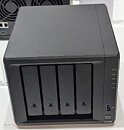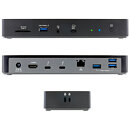GEEKOM Unveils IT15 Intel-Based Mini PC
GEEKOM, a leading innovator in mini PC technology, is set to release its latest powerhouse, the GEEKOM IT15, setting a new benchmark for compact computing. Designed for professionals and businesses, this ultra-compact mini PC combines high-performance processing, robust stability, and unparalleled connectivity, making it the perfect solution for modern workspaces.
At the heart of the IT15 is Intel's 2nd Gen Core Ultra processor (up to Ultra 9), which delivers enhanced single-core performance and improved energy efficiency. By eliminating Hyper-Threading, the system optimizes pure computing power, ensuring rapid response times and higher productivity. With a turbo clock of up to 5.4 GHz, it effortlessly handles demanding tasks such as video editing, coding, and graphic design. The IT15 also leverages AI-driven performance optimization, enhancing system efficiency for task scheduling, power management, and content creation workflows.
At the heart of the IT15 is Intel's 2nd Gen Core Ultra processor (up to Ultra 9), which delivers enhanced single-core performance and improved energy efficiency. By eliminating Hyper-Threading, the system optimizes pure computing power, ensuring rapid response times and higher productivity. With a turbo clock of up to 5.4 GHz, it effortlessly handles demanding tasks such as video editing, coding, and graphic design. The IT15 also leverages AI-driven performance optimization, enhancing system efficiency for task scheduling, power management, and content creation workflows.































































































